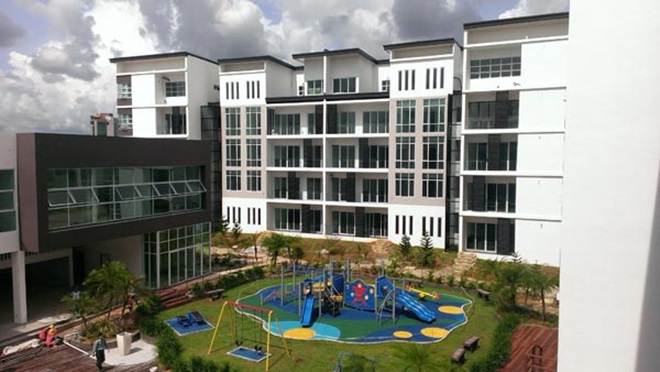Property ‘bubble situation’ unlikely this year, says analyst
KUALA LUMPUR – The so-called impending property bubble is unlikely to happen this year, as there are no signs to indicate such a trend at the moment, CBRE-WTW managing director Foo Gee Jen said.
Property bubbles usually arise with an increase in demand, driving developers to build more, and are said to “burst” as demand deteriorates, which will then lead to a sudden drop in prices.
“We will not have a ‘bubble situation’ as we strongly believe that the fundamentals are still there,” Foo told reporters at the 2018 Asia Pacific Real Estate Market Outlook briefing.
“Overall in the market, we have not seen any panic selling happening in Malaysia. Oversupply issues are also prevalent only in certain sub-locations such as in Cyberjaya, where there are concerns on many empty units there.”
In fact, Foo said, the landed property segment is still registering a positive take-up rate between 65% and 70%, suggesting that there is still demand for this category of houses.
Furthermore, property developers have become more cautious in launching their products, and that would definitely cushion the impact of oversupply in the market.
Moreover, Foo said, Bank Negara Malaysia has introduced enough measures to monitor the real estate sector, curb speculation and control price overheating amid the overhang in certain property segments.
The measures include Real Property Gains Tax, foreign ownership restrictions and the recently proposed freezing of development approvals of luxury condominiums, offices and shopping complexes.
“Bubble is always about whether market price is overheating. The cooling impact by Bank Negara has in fact cushioned that. Besides, for the last three years, pricing has moderated about 5%-8%, which we believe is in line with the salary increment of 5%-6% during the period,” he noted.
Overall, Foo said the property market is expected to remain flat in 2018, with low single-digit growth in terms of prices with higher pressure on high-end products, small office home offices (SOHO) as well as small office versatile offices (SOVO).
He said the outlook continues to be challenging, adding that uncertainties would still linger on this year.
“The challenging part is always how to fill up the units that have been in the market and going to be completed, as in the last five years there has been a lot of launches. And this is the time that perhaps the vacancy rate of some of the SOHO/SOVO and high end residential is going to be very challenging,” he added.
Nevertheless, Foo said from the last quarter of 2017, the volume of transactions of residential property segment has improved, attributed to the fact that developers have restrategised their products at more affordable price levels. This year, more strategic adjustments on products, pricing and sale strategies may be observed.
Meanwhile, Foo said, mismatch in location has dampened public reception towards affordable housing schemes.
“Ten years ago we had an oversupply of low-cost houses. Not because there is no demand, but because of mismatch of location. So this is the situation that we are facing.
“Therefore I urge PR1MA and the rest of the agencies to carry out proper feasibility studies before they launch their products,” he added, noting that some of the affordable houses are located in areas that are far away from infrastructure.
Asked whether other developers will follow Prosma Bhd’s plan to buy over some of PR1MA’s unsold units to be injected into its rent-to-own scheme, Foo said it is unlikely as such schemes would tie down their capital. – http://www.thesundaily.my/


